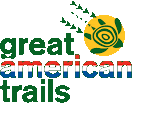Corpus Christi Caller-Times
Some words are enhancements to the pleasure of birdwatching.
On a chilly morning of early spring, one such word comes to mind: zugunruhe, a German word meaning pre-migratory restlessness. This state is brought on by the increased action of the bird’s pituitary gland.
I think perhaps a similar phenomenon occurs in humans around spring break, although the goal is somewhat different. In some species, migration is an act that ensures the survival of the species. But then, don’t vacations help to ensure survival?
Where we live, on the central flyway beside the Gulf of Mexico, we are geographically placed to observe many birds on their migratory travel route. Wood warblers stop here for rest and recovery before the final lap of their journey toward their nesting areas. We have more than 30 species of warbler on our checklist. Some are seen regularly, others reliably or only rarely.
Places to see warblers include Blucher Park, directly behind the Corpus Christi Public Library, in the 100 block of Carrizo Street. Throughout April, guided bird walks are conducted by members of the Audubon Outdoor Club of Corpus Christi. Walks begin at 7:30 a.m. on Saturdays and Sundays, except Easter. Wear comfortable shoes and bring binoculars.
Outdoor Club members also tend paths, pick up trash, and escort vandals or campers out of the area. This fall, the club contributed to the placing of a kiosk at the front corner of the park. Part of this structure is a chimney in which, it is hoped, chimney swifts will nest.
Another good place to look for spring migrants is Packery Channel County Park. This park is reached by cautiously turning left, immediately after leaving the JFK Causeway, coming on to Padre Island. A sanctuary, donated by Dr. Beverly Held, is located in the residential section, to the right of the park entrance, beyond the Visitor’s Center.
A small pond there can be a good place to observe birds. The oak mott, on a sand dune on the left of the entrance road, is also good. Expect grebes there and a pair of greater kiskadee flycatchers nested last year.
Any day, soon, service wires at Packery will be filled with scissor-tailed flycatchers, Eastern kingbirds, and swallows and purple martins. On the ground, look for painted and indigo buntings in small groups. Along with warblers, look for white-eyed, blue-headed, yellow-throated, and Philadelphia vireos.
Early arriving warblers can include hooded warblers, black and white warblers, and Nashville warblers. Northern parulas seem to like the newly budded foliage on live oak trees, so listen for them, and look for them high up. They are small, bluish warblers with yellow throats and breasts, and a distinctive song, a buzzy trill that “climbs the scale and snaps over at the end” as Roger Tory Peterson describes it. This is one of a few warblers that sing while they are here.
A good guide for local birders is “Birding Corpus Christi and the Coastal Bend,” by Jamie Ritter, published by Falcon Guides.
Phyllis Yochem, a Corpus Christi resident, has studied birds in Texas since 1960.






